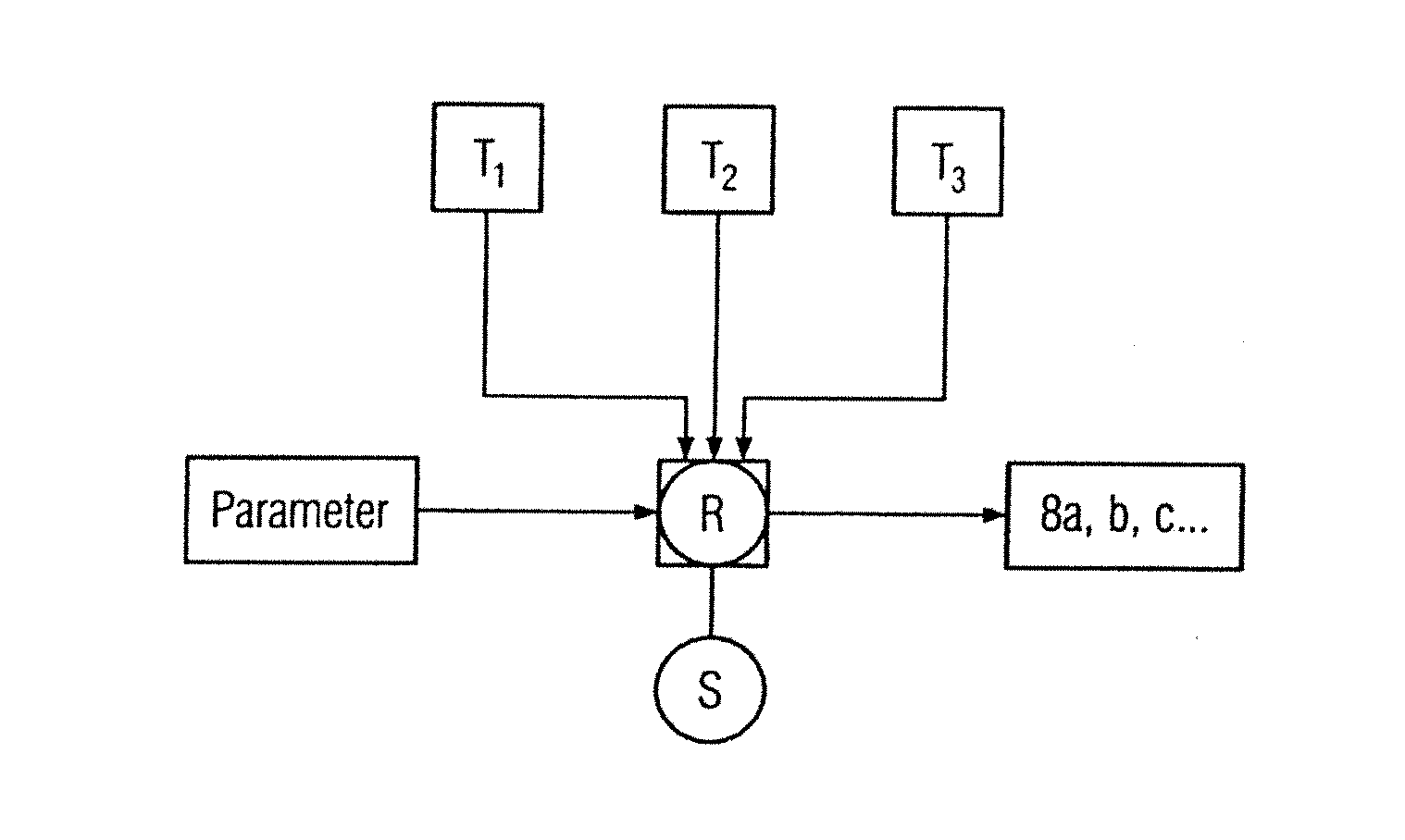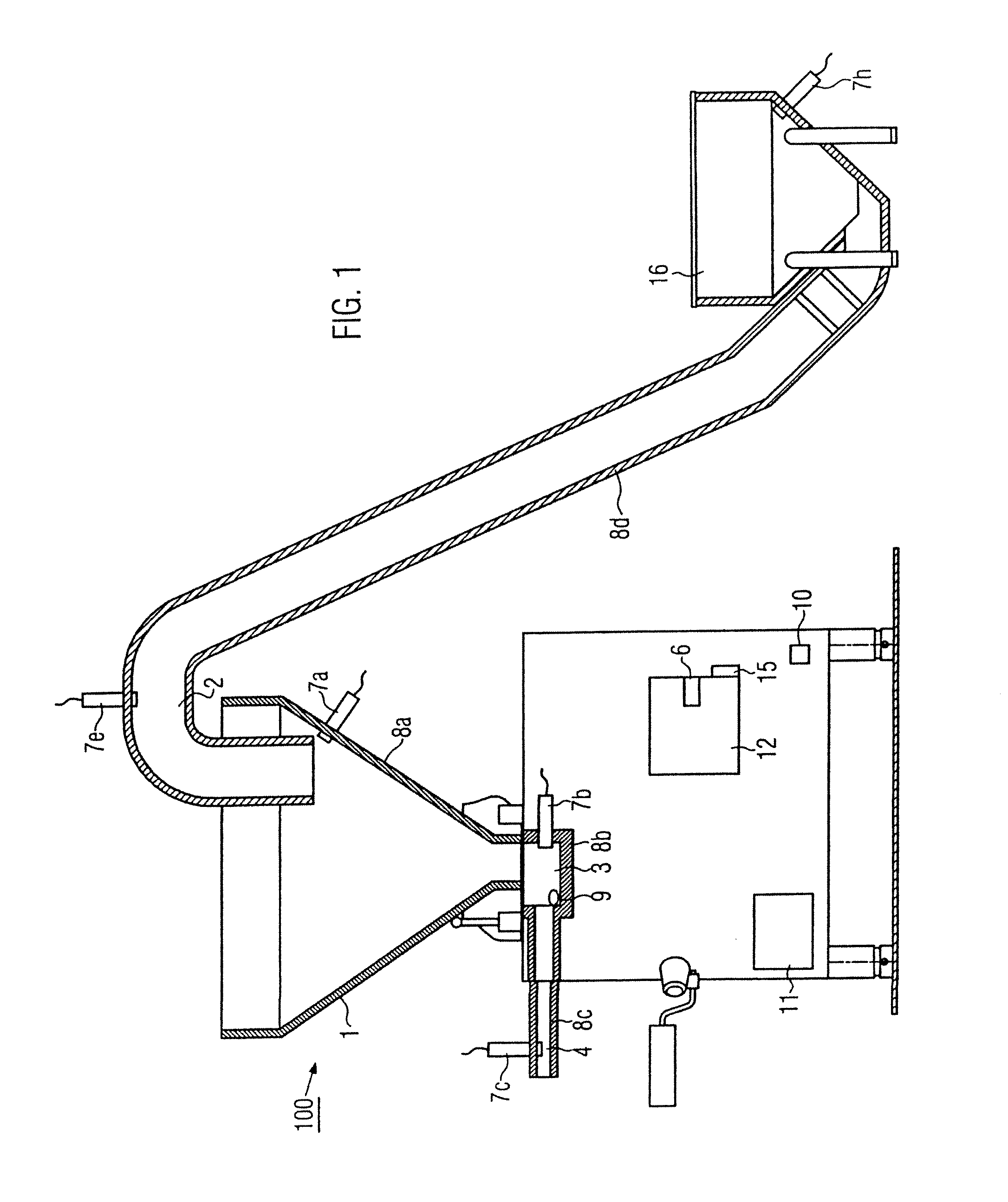Temperature control of the mass flow in a filling machine
a filling machine and temperature control technology, applied in the direction of butchering, non-electric variable control, instruments, etc., can solve the problems of no longer being processed, production may even need to be interrupted, and cannot be processed further, so as to reduce the maximum power, and increase the process reliability
- Summary
- Abstract
- Description
- Claims
- Application Information
AI Technical Summary
Benefits of technology
Problems solved by technology
Method used
Image
Examples
Embodiment Construction
[0024]FIG. 1 illustrates an embodiment of a filling machine 100 according to the disclosure. The filling machine 100 comprises a filling hopper 1, for example a vacuum hopper, in which a negative pressure can be produced. Furthermore, the filling machine 100 comprises a suction pipe 2, through which the paste mass, also designated as filling material in the following, can be passed into the filling hopper 1. The suction pipe 2 is part of a suction intake section for the filling material. A preceding floor-mounted hopper 16 can also be included in the suction intake section. Furthermore, the filling machine also comprises a conveying mechanism 3, which is arranged at the lower end of the conically shaped filling hopper 1. In a familiar manner a conveying mechanism 3 of this type comprises, for example, a vane pump or a screw conveyor, which pushes the filling material out of the filling hopper 1 in the direction of a filling tube 4, wherein the filling material is pushed into a sausa...
PUM
 Login to View More
Login to View More Abstract
Description
Claims
Application Information
 Login to View More
Login to View More - R&D
- Intellectual Property
- Life Sciences
- Materials
- Tech Scout
- Unparalleled Data Quality
- Higher Quality Content
- 60% Fewer Hallucinations
Browse by: Latest US Patents, China's latest patents, Technical Efficacy Thesaurus, Application Domain, Technology Topic, Popular Technical Reports.
© 2025 PatSnap. All rights reserved.Legal|Privacy policy|Modern Slavery Act Transparency Statement|Sitemap|About US| Contact US: help@patsnap.com



